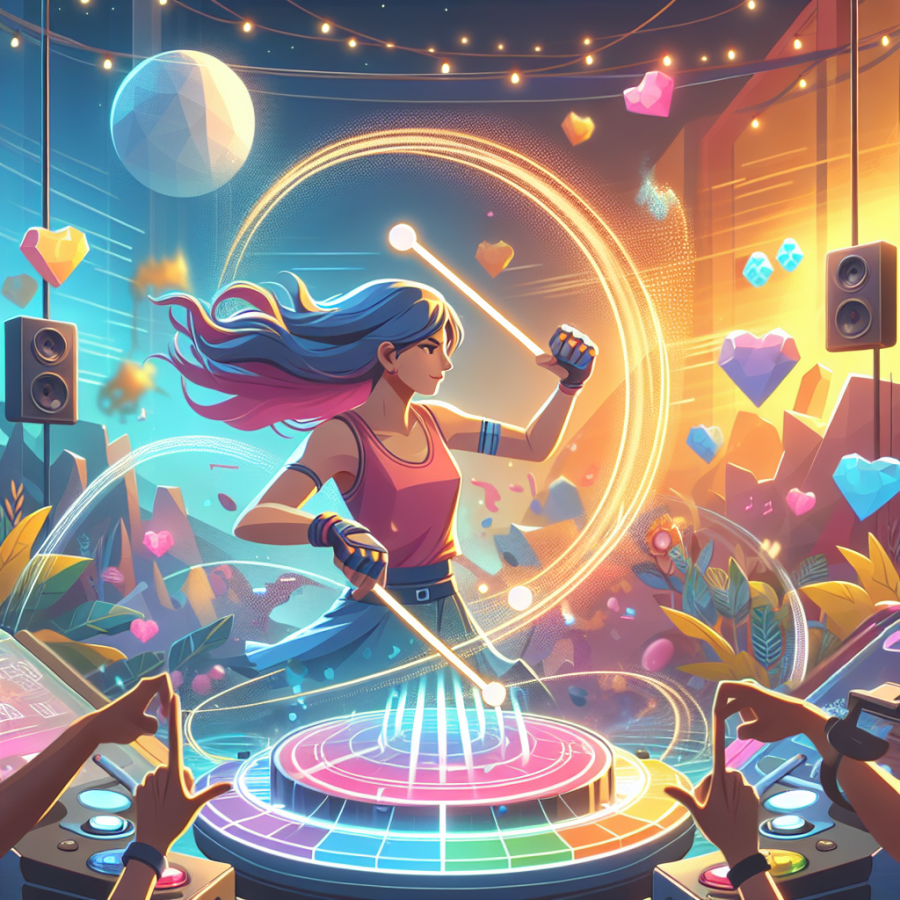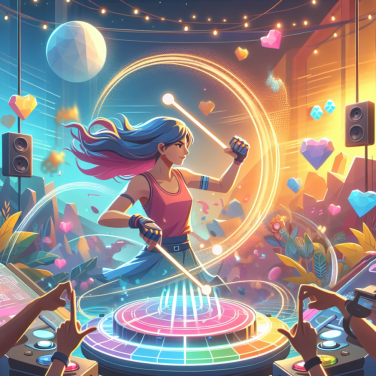Interactive Melodies: How Rhythm Games Became a Global Phenomenon
Rhythm games have ceaselessly captivated audiences across the globe, transcending beyond mere entertainment to become a distinct and vibrant part of gaming culture. The entrancing allure of interactive melodies lies at the heart of their appeal. Once relegated to niche corners of the gaming world, these games have blossomed into a global phenomenon, harnessing the universal language of music to bring people together.
The trajectory of this genre traces back to early arcade cabinets where the simple act of tapping to the beat laid the foundational stone for future titles. As the games evolved, they started to incorporate varied genres and interactive elements, offering gamers immersive ways to experience their favorite tracks. From dance pads that compel players to leap and step in time to the music, to guitar-shaped controllers that give the feeling of strumming to the electric energy of a live concert, rhythm games have expanded the definition of interaction.
Titles like "Dance Dance Revolution" and "Beatmania" set the stage in the '90s, attracting a dedicated following with their engaging gameplay and upbeat soundtracks. But it was the emergence of "Guitar Hero" that catapulted the rhythm game genre into the limelight. This game wasn't simply about hitting the notes on time; it was about feeling like a rock star, about the fantasy of performing in front of legions of fans.
The success of "Guitar Hero" spurred a slew of similar titles, which offered a broader range of musical genres and pushed the envelope of interactive gaming. "Rock Band" took it a step further by enabling entire groups to come together—drummer, guitarist, bassist, and vocalist—to create a shared musical journey. This sense of community and shared experience is a core element that has sustained the rhythm game genre's popularity.
Perhaps one of the most intriguing developments in the realm of rhythm games is the incorporation of digital cultivation, where players not only immerse themselves in the music but also contribute to the creation of new rhythms and melodies. This creative aspect has birthed a new wave of artists and musicians who found their initial expression through gaming.
Moreover, the genre's influence has extended beyond personal leisure, making a notable impact on educational and therapeutic practices. Rhythm games have been employed as tools for teaching music theory, motor skills, and even language acquisition. The immersive nature of the game mechanics has proven beneficial in enhancing cognitive abilities, hand-eye coordination, and even in physical rehabilitation settings.
Read also:
Exploring the World with Geohashing: A Modern-Day Adventure
From Arcades to Smartphones: Tracing the Evolution of Rhythm Games
Rhythm games have captivated audiences for decades, charting a course from the vibrant lights of arcade cabinets to the sleek screens of modern smartphones. This journey began in the late 1990s with titles like "Dance Dance Revolution," which brought a kinetic energy to arcades, inviting players to step on a dance mat and hit arrows with their feet in time with the music. The game's success spawned countless imitations and variations, creating a rhythm game craze that spread across the globe.
As technology advanced, rhythm games evolved alongside it, moving from arcades to home consoles. Games such as "Guitar Hero" and "Rock Band" allowed players to simulate playing musical instruments, incorporating peripherals shaped like guitars, drums, and microphones. These games expanded the social aspect of rhythm gaming, allowing multiple players to jam together as a virtual band and enjoy a more immersive experience. Their popularity led to the release of numerous sequels, special editions, and an array of downloadable songs to keep players engaged.
Handheld gaming devices also proved to be a fertile ground for rhythm games. Systems like the Nintendo DS and the PlayStation Portable offered unique experiences with touch screens and buttons, leading to innovative titles like "Elite Beat Agents" and "Patapon." These games leveraged the handhelds' capacities for tactile interaction, adding more layers of depth and new challenges to rhythm gameplay.
With the emergence of smartphone technology, rhythm games experienced yet another transformation. The ubiquity of smartphones meant that players could now carry their favorite rhythm games in their pockets, tapping and swiping on the touchscreen to the beat of the music wherever they went. Mobile rhythm games like "Cytus," "Osu!," and "Deemo" capitalized on the portability and connectivity of smartphones, providing rich audiovisual experiences alongside competitive gameplay through online leaderboards and social media integration.
Developers also began to incorporate various monetization strategies, such as in-game purchases and advertising, to support the free-to-play model that dominates the mobile gaming market. This has led to continuous developments in the genre, with new songs and features frequently added to keep players engaged and incentivized to return.
Augmented reality (AR) and virtual reality (VR) technology are now pushing the boundaries of rhythm games even further. VR titles like "Beat Saber" have become phenomena, combining music, rhythm, and physical movement with the immersive environment of virtual space.




